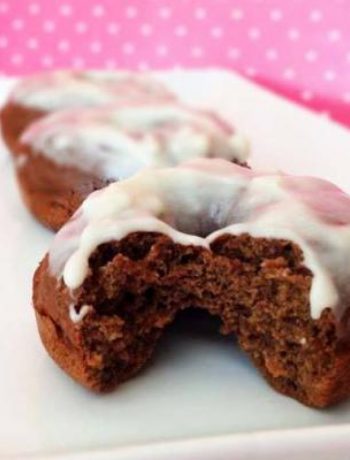
TipHow to Store Fresh Sausage
Fresh sausage must be consumed or frozen within one to two days of purchase. They can be stored in their original packaging, but refrain from opening the package until you’re ready to cook. The easiest way to tell if a sausage has gone bad is its smell. Discard of anything that smells foul.
Read More
1 of 6
Next: How to Freeze Fresh Sausage
TipHow to Freeze Fresh Sausage
Sausage can be kept in its original packaging, but re-wrapped in aluminum foil, plastic wrap, or freezer paper to prevent freezer burn. A frozen fresh sausage’s optimal flavor will last one to two months beyond its initial freeze date, though properly packaged sausage can last significantly longer.
Read More
2 of 6
Next: How to Cook Fresh Sausage
TipHow to Cook Fresh Sausage
To cook sausage in its traditional form (whole and with casing), spray a skillet with cooking spray and set the heat to medium-high. Add the sausages and allow their sides to brown. Continuously flip the sausages with tongs until they are browned evenly. Lower heat to medium-low and carefully had half a cup of water to the skillet. Cover the sausages and allow to simmer in the water for 12 minutes or until the they are cooked through.
Read More
3 of 6
Next: How to Store Eggs
TipHow to Store Eggs
Eggs should keep a consistent and low temperature. This is best achieved by placing their carton in the center of your fridge. The eggs should also remain in their original packaging to avoid the absorption of strong odors. It is wise to follow the “best by” date to determine overall freshness, but eggs can be tested by simply dropping them into a bowl of water. Older eggs will float while fresh eggs will sink. This is due to the size of their air cells, which gradually increase over time. Cooked eggs have a refrigerator shelf life of no more than four days, while hard-boiled eggs, peeled or unpeeled, are safe to consume up to one week after they’re prepared.
Read More
4 of 6
Next: How to Cook Eggs
TipHow to Cook Eggs
The beauty of an egg is its versatility. Eggs can be cooked in a variety of ways. Here are some tips in accomplishing the four most common preparations. Scrambled: Whip your eggs in a bowl. The consistency of your scrambled eggs is a personal preference, though it seems like the majority of breakfast connoisseurs enjoy a more runny and fluffy option. In this case, add about ¼ cup of milk for every four eggs. This will help to thin the mix. Feel free to also season with salt and pepper (or stir in cream cheese for added decadence). Grease a skillet with butter over medium heat and pour in the egg mixture. As the eggs begin to cook, begin to pull and fold the eggs with a spatula until it forms curds. Do not stir constantly. Once the egg is cooked to your liking, remove from heat and serve. Hard-boiled: Fill a pot that covers your eggs by about two inches. Remove the eggs and bring the water to a boil. Once the water begins to boil, carefully drop in the eggs and leave them for 10-12 minutes. For easy peeling, give the eggs an immediate ice bath after the cooking time is completed. For soft-boiled eggs, follow the same process, but cut the cooking time in half. Poached: Add a dash of vinegar to a pan filled with steadily simmering water. Crack eggs individually into a dish or small cup. With a spatula, create a gentle whirlpool in the pan. Slowly add the egg, whites first, into the water and allow to cook for three minutes. Remove the egg with a slotted spoon and immediately transfer to kitchen paper to drain the water. Sunny Side Up/Over Easy/Medium/Hard: For each of these preparations, you are cracking an egg directly into a greased frying pan. For sunny side up, no flipping is involved. Simply allow the edges to fry until they’re golden brown. To achieve an over easy egg, flip a sunny side up egg and cook until a thin film appears over the yolk. The yolk should still be runny upon serving. An over medium egg is flipped, fried, and cooked longer until the yolk is still slightly runny. An over hard is cooked until the yolk is hard.
Read More
5 of 6
Next: How to Freeze Eggs
TipHow to Freeze Eggs
Eggs can easily be frozen, but instructions vary based on the egg’s physical state. As a general rule, uncooked eggs in their shells should not be frozen. They must be cracked first and have their contents frozen. Uncooked whole eggs: The eggs must be removed from their shells, blended, and poured into containers that can seal tightly. Uncooked egg whites: The same process as whole eggs, but you can freeze whites in ice cube trays before transferring them to an airtight container. This speeds up the thawing process and can help with measuring. Uncooked yolks: Egg yolks alone can turn extremely gelatinous if frozen. For use in savory dishes, add ⅛ teaspoon of salt per four egg yolks. Substitute the salt for sugar for use in sweet dishes and/or desserts. Cooked eggs: Scrambled eggs are fine to freeze, but it is advised to not freeze cooked egg whites. They become too watery and rubbery if not mixed with the yolk. Hard-boiled eggs: As mentioned above, it is best to not freeze hard-boiled eggs because cooked whites become watery and rubbery when frozen.
Read More
6 of 6
Next: How to Store Fresh Sausage
Hate waking up early on weekends? Wish Sunday brunch would magically appear when you finally do roll out of bed? Problems solved, thanks to this cheesy sausage breakfast casserole cooked in a crock pot, an adaptation of our oven breakfast casserole. Depending on what time you want to eat, you could start cooking right before going to bed, or prep and refrigerate the ingredients the night before, then pour the mixture into the slow cooker in the morning. Chill the rosé, a six-pack of Franziskaner, or maybe even a cucumber salad. This is a perfect base for a lazy day lounging at home.
Ingredients:
- 1 tablespoon vegetable oil
- 1 pound uncooked pork breakfast sausage, casings removed
- 12 large eggs
- 2 1/2 cups whole milk
- 2 teaspoons ground mustard, such as Colman’s
- 1 teaspoon kosher salt
- 1/2 teaspoon freshly ground black pepper
- 6 ounces French or sourdough baguette, cut into 3/4-inch cubes (about 5 1/2 cups)
- 3/4 cup sharp cheddar cheese, shredded
- 3/4 cup Monterey Jack cheese, shredded
- Cooking spray
Instructions:
- Heat the oil in a large frying pan over medium heat until shimmering. Add the sausage and cook, breaking up the meat into smaller pieces with a wooden spoon, until it’s no longer pink and is starting to brown, about 10 minutes. Remove the pan from the heat and let it cool for 10 minutes.
- Place the eggs in a large bowl and whisk until they’re broken up. Add the milk, mustard, salt, and pepper and whisk to combine. Add the reserved sausage, bread, and cheeses and stir to combine.
- Coat a medium or large slow cooker with cooking spray and pour in the casserole mixture. Cook for 4 hours on high.
- Share on Facebook
- Share on Reddit
- Save (35)




No Comments